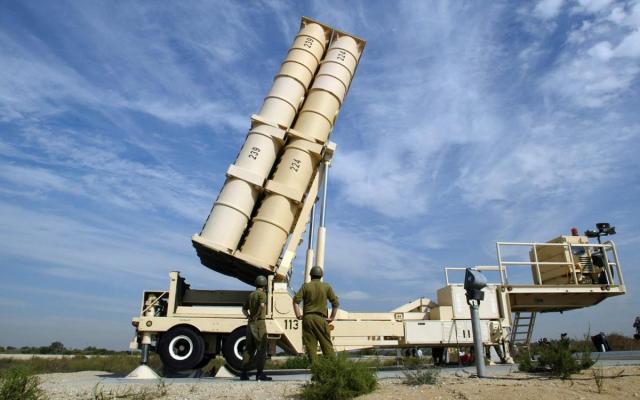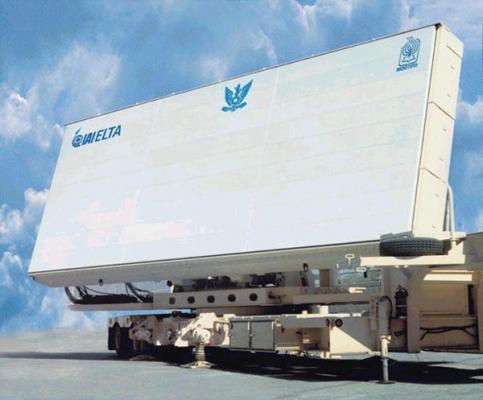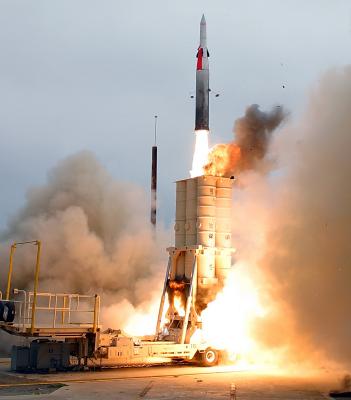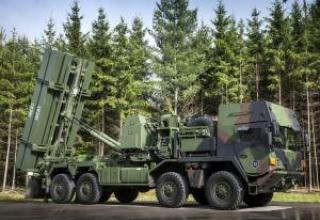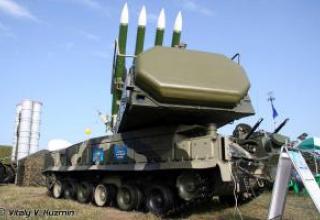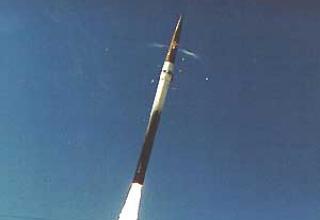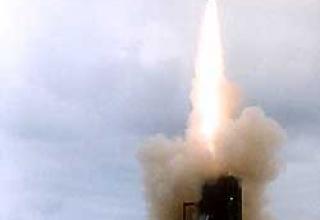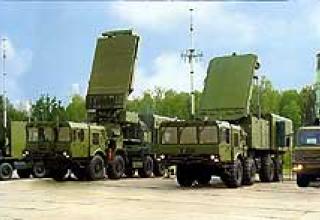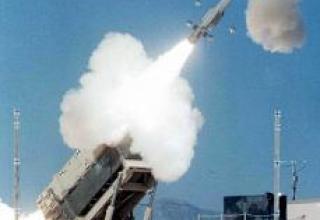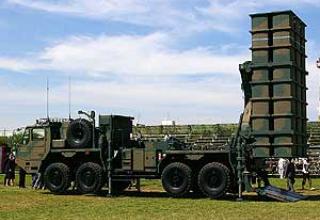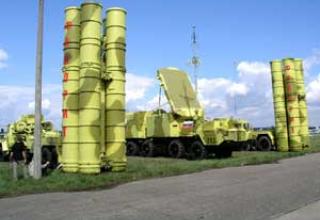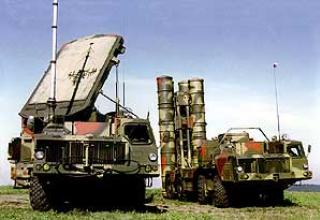The Arrow-2 complex ("Hets-2", Hebrew: חץ - "Strela") is a missile defense system designed to intercept ballistic missiles with a range of up to 3000 km. The complex is part of Israel's advanced missile defense system.
Israel began developing a theater missile defense system (TVD anti-missile defense) in 1986. This was due to the potential danger of missile technology proliferation in the Middle East region, which was confirmed in 1991, when Israeli cities were attacked by Iraqi missiles R-17 ("Scud"). Given the lack of the necessary resources in Israel, the U.S. has agreed to participate in funding and joint development of the Israeli missile defense complex under the JMD program.
The first test launch of the missile was carried out on August 9, 1990. After a series of launches that proved the ability of the Arrow-1 missile to intercept enemy ballistic missiles, in 1994 the first phase of work was completed and the development and production of the more advanced Arrow-2 missile began. The main developer is Israel Aerospace Industries (IAI).
On November 29, 1998, the IAI handed over the first batch of Arrow-2 missiles to the Israeli Ministry of Defense. The complex was adopted by the Israel Defense Forces under the name "Hets-2". Later on, the anti-missile complex was repeatedly upgraded in order to improve combat efficiency, the upgrade options were consistently designated from block1 to block4.
The first Arrow-2 battery was deployed on March 14, 2000 at Palmahim Air Base near Rishon Le Zion, the second at Ein Shemer Air Base near Hadera in October 2002. According to the Jerusalem Post, in 2007, the location of the second battery could change due to changes in the Israeli doctrine of missile defense and the threat of missile strikes from Iran and Syria to the foreground. The deployed batteries are under the direct control of Israel's Air Defense Command and provide cover for up to 85% of the country's territory (see diagram).
In February 2003, IAI signed an agreement with Boeing to establish a production infrastructure for manufacturing Arrow-2 missile components in the US. Boeing is responsible for the production of about 50% of the components, including electronics, rocket engine, transport and launch containers, and coordinates the activities of more than 150 American companies involved in the program. IAI is responsible for the integration and final assembly of the rocket in Israel.
In early 2012, Aviation Week Magazine announced that IAI and Boeing had signed an agreement on cooperation in the Arrow missile defense system development project, which was named Arrow-3. Arrow-3 is considered as an echelon of long-range intercept (up to 100 km) in the Israeli ABM system. Besides it, the prospective BMD system will also include the Iron Dome, Arrow-2 and Sharvit xsamim complexes.
In 2012 Boeing - IAI consortium announced its intention to supply Arrow-2 and Arrow-3 missile defense systems to the international market - South Korea and India are among potential buyers.
Composition:
The Arrow Weapon System is a part of the complex to be relocated:
- EL/M-2080 Green Pine view and pointing radar;
- command center Golden Citron (Citron Tree) from Tadiran Telecom;
- Israel Aerospace Industries' Brown Hazelnut (Hazelnut Tree) rocket launch control center;
- communication center;
- 4 to 8 launchers (see photo);
- Arrow-2 ("Heath") interceptor missiles (see image 1, photo 2).
- auxiliary equipment, including power supply and cooling systems of the radars (see photo1, photo2).
The launchers are placed on semi-trailers, are mobile and can be located up to 300 km away from the command post and radar. The recharging time of the boosters is 1 hour.
Citron Tree's command post equipment is mounted on a vehicle landing gear and includes communication and information exchange systems with tactical aviation command posts, as well as with Patriot and THAAD combat control systems. The Citron Tree control room is equipped with powerful information processing tools, provides joint data processing with the EL/M-2080 Green Pine radar and other sources, as well as combat operation control in fully automatic mode. Battle control - 6 people, workplaces are equipped with modern information display facilities.
The radar station of the EL/M-2080 Green Pine complex was developed by Elta and adopted for service in 1995. EL/M-2080 operates in L-band (500-1000MHz) and is equipped with 9x3m active phased array antenna (AFAR). AFAR of circular rotation consists of 2000-2300 receiving and transmitting modules and is placed on an automobile semitrailer. The station is capable of detecting and escorting simultaneously up to 12 targets flying at a speed of up to 2.5-3 km/s and pointing up to two anti-missile missiles at one of them. The detection range is up to 500km. The total weight of the radar is over 60 t.
The enhanced detection radar, designated EL/M-2080S Super Green Pine, is equipped with higher power receiving and transmitting modules and has an increased range of target detection up to 800-900km. In October 2010, the Israeli Ministry of Defense announced that the third deployable Arrow ABM battery will be equipped with an EL/M-2080S Super Green Pine radar.
Defeat of the target is provided by a two-rocket volley (see diagram), according to advertising information, the area of engagement at an altitude of 8 to 50 km.
The Arrow-2 two-stage solid fuel interceptor is equipped with a detachable, self-guided intercept stage. The missile is equipped with a thrust vector-controlled engine. The homing system is combined, including infrared and radar channels. The thermal imaging channel is equipped with a matrix of infrared detectors on indium antimonide located in the focal plane of the optical system and providing an image of the target (developed by Raytheon). According to the developers, the Arrow-2 guidance system provides reliable target acquisition in difficult weather conditions and when the enemy uses electronic countermeasures.
The missile's warhead (BC) is a shrapnel-flagged, directional missile. BC is developed by the Israeli company Rafael. The radius of flight of shrapnel - 75m, the radius of guaranteed defeat - 50m. Non-contact detonator. The length of the rocket - 7m, diameter - 800mm, starting weight - 1300kg. Maximum speed - 3km / s.
The cost of one anti-missile is estimated at 1.5 million dollars. The total cost of the Arrow U.S.-Israeli missile system program is over $2 billion.
Unlike previous versions of anti-missile systems, Arrow-3 will use a kinetic kill warhead. The new missile is designed to intercept outside the atmosphere ballistic missiles with a range from 400 to 2000 km, similar to Iranian missiles "Shahab-3" and "Sajil". The Arrow-3 project, which began in 2009, is jointly funded by the Government of Israel and the United States Missile Defense Agency.
It is planned to include an improved Super Green Pine radar into Arrow-3 complex, besides, Arrow-3 will be coupled with AN/TPY-2 radar located in the south of Israel.
Characteristics:
| Defeat zone by height, km: - minimum - maximum |
8 50 |
| Typical target detection range of EL/M-2080 Green Pine radar, km | up to 500 |
| Number of simultaneous targets | up to 12 |
| Error in determining the target coordinates, m | 4 |
| Missiles channeling | 2 |
| Hec-2 anti-missile | |
| Dimensions, m: - length - case diameter |
7.0 0.8 |
| Start weight, kg | 1300 |
| Guaranteed target destruction radius, m | 50 |
| Maximum flight speed, km/s | 2.5- 3 |
| Maximum flight range, km | 100 |
Testing:
29.07.2004 First tests of Arrow-2 system off the coast of California. The anti-missile successfully hit a target simulating a "Scud" missile at an altitude of 40 km.
26.08.2004 Arrow-2 system failed tests off the coast of California. The anti-missile failed to intercept a target fired from an aircraft simulating an advanced Scud-D missile. During the tests, the detection radar successfully detected and identified the target. Problems arose during the final phase of the interceptor flight, after the first stage separation.
On 02.12.2005, the missile defense battery deployed at Palmahim Air Base successfully intercepted a target simulating the operational-tactical missile "Shihab-3". In the tests, an upgraded version of the Arrow-2 block 3 anti-missile was used, which has enhanced tactical and technical data, including for actions against group targets.
11.02.2007 First night launch of the Arrow-2 anti-missile. Two geographically dispersed batteries of the Israeli ABM system were used in the tests. The interception was provided by a battery located at a greater distance from the launch site of a target launched from an Israeli Air Force F-15 fighter.
26.03.2007 Successful testing of the improved Arrow-2 rocket in conjunction with other systems of the complex. New interceptor has modernized control system and longer range.
16.04.2008 Successful launch of the new Arrow-2 block 3 missile modification on the target simulating Shahab-3 ballistic missile launched from F-15 fighter. During the tests in test mode for the first time the improved EL/M-2080S Super Green Pine detection radar was used.
07.04.2009 Successful test of the Arrow-2 block 4 missile. Ankor Cahol (Blue Sparrow) target launched by Israeli Air Force F-15 fighter from a distance of about 1000 km was intercepted over the Mediterranean Sea. The EL/M-2080 Green Pine radar and the American forward-based mobile radar (FBX-T) AN/TPY-2, deployed in the Negev in late 2008, took part in the test.
On 27.07.2010 the USA and Israel concluded an agreement on joint development of a new Arrow-3 missile system. According to the document, Israel will receive $100 million from the United States to work on this BMD system.
On 22.02.2011 the USA and Israel jointly tested the upgraded Arrow-2 anti-missile. The missile was launched on the California coast and was considered successful - the missile hit a ballistic target launched from a U.S. Navy ship. This test was the second one in which the full Arrow BMD system, including the EL/M-2080 Green Pine radar, took part.
29.07.2011 Successful first test of the Arrow-3 anti-missile system. The missile successfully hit the conventional enemy's ballistic target missile.
10.02.2012 Testing of the Arrow-2 block 4 anti-missile, as part of the complex. Detection and tracking of the target launched from an Israeli Air Force fighter was performed for the first time using the EL/M-2080S Super Green Pine radar. After the information was transmitted to the Citron Tree combat control system, an intercept team was formed and no actual missile launch was conducted.
25.02.2013 Israel Defense Ministry announced a successful flight test of the Arrow-3 complex over the Mediterranean Sea. The interceptor reached a flight altitude of 100km, the flight lasted 6 minutes.
03.09.2013 Israel Missile Defense Organization and the U.S. Missile Defense Agency (U.S.) announced the first flight test of a new target "Ankor Shahor" ("Black Sparrow"). The test was conducted at an Israeli test site in the Mediterranean Sea. The targets were launched at 9:15 a.m. The test was conducted at the Israeli test site in the Mediterranean Sea. The radar Super Green Pine of Arrow complex detected the target and provided escort, the information received was transmitted to the combat control system Citron Tree. According to the Israeli Defense Ministry, all elements of the missile defense system worked out as usual.
The Russian Defense Ministry said that the radar station of the Russian missile warning system, located in Armavir, detected the launch of two ballistic missiles from the Mediterranean Sea towards Syria. According to the Russian side, both objects fell into the sea.
09.09.2014 Testing of the Arrow-2 ABM system to intercept the Ankor Shahor target (see photo). Interception failed.
03.01.2014 According to the press-service of the Ministry of Defence, the second test of the Arrow-3 ABM system took place at the Palmakhim airbase. At 08:00, the Arrow-3 missile interceptor successfully entered the calculated flight path in the upper atmosphere, in accordance with the test plan. All systems worked out in the normal mode.
09.09.2014 The Israel Defense Ministry announced that the advanced Arrow-2 ABM system had been tested. The purpose of the tests, conducted with the assistance of the Pentagon, was to test the effectiveness of the new version of the system against future potential threats. Later on the Israeli media published information that the tests failed.
16.12.2014 Failed tests of the Arrow-3 anti-missile. The Israeli Defense Ministry reports that problems occurred during the launch of the missile.
10.12.2015 The Israel Defense Ministry reported the successful test of the Arrow-3 BMD system (see photo). The interceptor missile was launched at 8:10 local time and successfully intercepted the target outside the atmosphere. It was launched from the Palmachim military base at the Anchor Shahor target fired by an Air Force aircraft over the Mediterranean Sea.
Sources:
- Независимое военное обозрение
- Создана модификация "Хец-2" для борьбы с ракетами средней дальности
- А.Алексеев Военно-воздушные силы И ПВО Израиля // Зарубежное военное обозрение (Москва).- № 2, 2002
- Путеводитель по Израилю/Хец
- http://www.waronline.org/IDF/Articles/PVO/hetz.htm
- Израиль: «Хец» против «Шахаб»
- http://www.army-technology.com/projects/arrow2/
